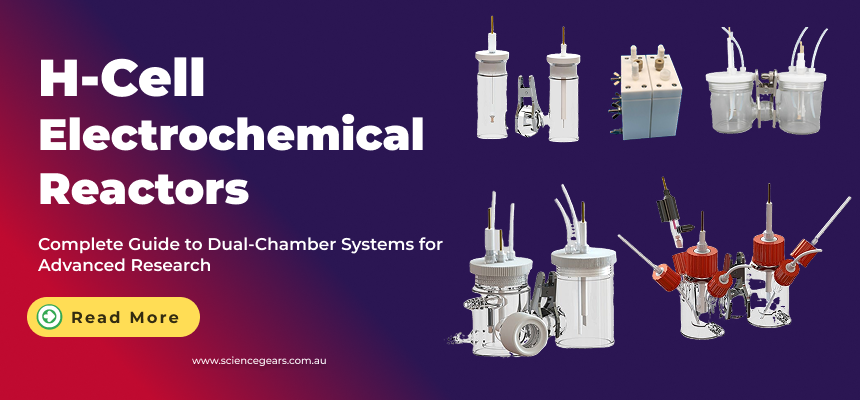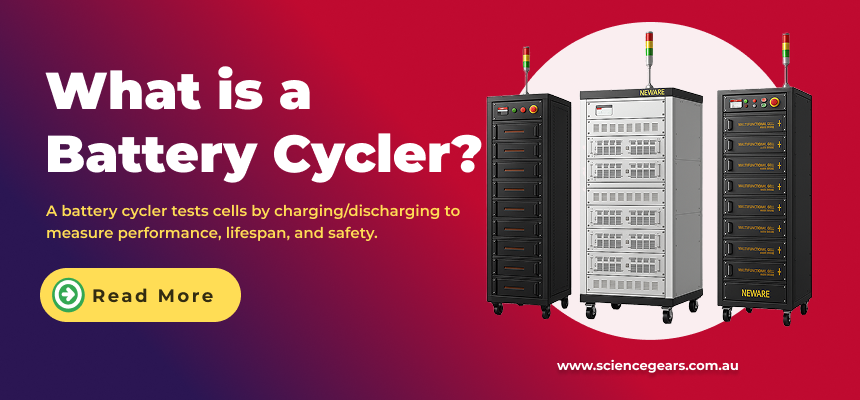Introduction
Electrochemical techniques are crucial in understanding electron transfer reactions, material properties, and their applications in energy, environment, and healthcare. These techniques provide valuable insights into reaction mechanisms, material stability, and the behaviors of electrochemical systems in real-world applications. Electrochemical techniques are fundamental to modern scientific and industrial advancements, from energy storage to environmental sensing.
Electrochemical Workstations: Understanding the Correct Terminology
A common misconception in electrochemistry is the interchangeable use of the term ‘potentiostat’ for all electrochemical instruments. While ‘potentiostat’ refers specifically to an instrument that controls and measures the potential in an electrochemical cell, modern electrochemical workstations often go beyond potentiostatic control. These instruments can perform both potentiostatic (voltage-controlled) and galvanostatic (current-controlled) experiments, making the term ‘electrochemical workstation’ a more appropriate descriptor.
Alternative Names for Electrochemical Instruments
- Potentiostat – Used when referring to instruments that control the voltage and measure current.
- Galvanostat – Used for instruments that control current and measure voltage.
- Electrochemical Workstation – A broad term that encompasses instruments capable of potentiostatic, galvanostatic, and impedance measurements.
- Electrochemical Analyzer – Often used for portable or multi-functional electrochemical systems designed for various analytical applications.
- Impedance Analyzer – Used when the instrument specialises in Electrochemical Impedance Spectroscopy (EIS).
Why Is There Confusion in Naming?
The confusion arises because many early electrochemical instruments were simple potentiostats. As technology evolved, new capabilities were added, such as impedance spectroscopy and multipurpose electrochemical techniques. However, the term ‘potentiostat’ remained widely used even when instruments gained galvanostatic and impedance capabilities. Many researchers still default to calling their workstations ‘potentiostats,’ even if they perform a wide range of electrochemical experiments beyond voltage control.
This misunderstanding can lead to incorrect instrument selection, particularly when a researcher needs a galvanostatic or impedance measurement system but mistakenly searches for a potentiostat-only device. By promoting the correct terminology, we can help ensure that researchers choose the right tool for their specific electrochemical applications.
What Are Electrochemical Techniques?
Electrochemical techniques are experimental methods used to study chemical reactions that involve electron transfer. These techniques provide valuable insights into reaction mechanisms, material properties, and the behaviour of electrochemical systems in real-world applications.
Why Are Electrochemical Techniques Important?
- Batteries and Energy Storage: Optimizing performance in lithium-ion and next-generation batteries.
- Corrosion Science: Studying material degradation and developing protective coatings.
- Sensors and Biosensors: Detecting chemicals, pollutants, and biological molecules.
- Catalysis and Fuel Cells: Improving efficiency in hydrogen production and electrochemical conversion.
- Environmental Monitoring: Analyzing water contamination and pollutant breakdown.
Introduction to Potentiostatic and Galvanostatic Techniques
Potentiostatic Techniques
Potentiostatic techniques involve applying a constant or varying potential to an electrochemical system while measuring the resulting current. These techniques are commonly used to study:
- Redox reactions and charge transfer kinetics.
- Corrosion resistance of materials.
- Electrochemical deposition and dissolution processes.
- Electrochemical sensor responses.
Galvanostatic Techniques
Galvanostatic techniques involve applying a constant current to an electrochemical system while monitoring the resulting potential. These techniques are particularly useful for:
- Battery and supercapacitor characterisation.
- Material stability and degradation studies.
- Electrochemical synthesis and electropolymerisation.
- Understanding charge/discharge behaviours in energy storage systems.
Both potentiostatic and galvanostatic techniques are fundamental in electrochemical analysis, offering insights into reaction mechanisms and material properties.
Introduction to DC and AC Electrochemical Techniques
Electrochemical techniques can be broadly classified into Direct Current (DC) techniques and Alternating Current (AC) techniques, each serving distinct purposes in electrochemical analysis. The choice between DC and AC techniques depends on the nature of the electrochemical system, the type of information needed, and the specific application.
Direct Current (DC) Electrochemical Techniques
DC techniques involve applying a constant or varying direct potential (voltage) or direct current over time to drive electrochemical reactions. These techniques are primarily used to study redox reactions, electrode kinetics, diffusion-controlled processes, and electrochemical mechanisms.
Key Features of DC Techniques
- Measure steady-state or transient responses.
- Provide information on redox potentials, reaction kinetics, and diffusion.
- Used for quantitative and mechanistic electrochemical studies.
Common DC Electrochemical Techniques
- Open Circuit Potential (OCP) – Measures the natural equilibrium potential of an electrode over time without applying an external current, providing insights into corrosion behaviour, electrode stability, and spontaneous redox reactions.
- Cyclic Voltammetry (CV) – Analyses redox behaviour by cycling the potential.
- Linear Sweep Voltammetry (LSV) – Similar to CV but with a single-directional potential sweep.
- Chronoamperometry (CA) – Measures current response to a constant potential step.
- Chronocoulometry (CC) – Integrates charge transfer over time to study adsorption and diffusion.
- Chronopotentiometry (CP) – Measures potential response under constant current conditions.
- Differential Pulse Voltammetry (DPV) – Enhances resolution for detecting trace analytes.
- Square wave voltammetry (SWV) – making it highly effective for trace analysis.
- Rotating Disk Electrode (RDE) and Rotating Ring-Disk Electrode (RRDE) Techniques – Improve mass transport for kinetic studies.
- Electrochemical Quartz Crystal Microbalance (EQCM) – Monitors mass changes during electrochemical reactions.
Alternating Current (AC) Electrochemical Techniques
AC techniques apply an alternating voltage to the electrode, typically superimposed on a DC potential, to measure the system’s response at different frequencies. These methods provide detailed insights into charge transfer, interfacial properties, and impedance characteristics of electrochemical systems.
Key Features of AC Techniques
- Provide frequency-dependent information about electrochemical systems.
- Used for probing charge transfer, diffusion, and interfacial phenomena.
- Effective for characterising materials, corrosion behaviour, and sensor interfaces.
Common AC Electrochemical Techniques
- Electrochemical Impedance Spectroscopy (EIS) – Analyses system impedance over a range of frequencies.
- AC Voltammetry (ACV) – Studies electrode kinetics by applying an AC signal on a DC potential.
More Details About Each Electrochemical Techniques
DC Techniques
Open Circuit Potential (OCP)
Open Circuit Potential – Time (OCPT), commonly referred to as Open Circuit Potential (OCP) or Rest Potential Measurement, is an electrochemical technique where the electrode potential is monitored over time without applying an external current or voltage. This method provides valuable insights into the equilibrium potential of an electrochemical system, electrode stability, and spontaneous redox processes occurring at the electrode-solution interface.
Alternative Names for OCP
- Open Circuit Potential (OCP)
- Rest Potential Measurement
- Zero-Current Potential
- Free Corrosion Potential
- Electrode Equilibrium Potential
Applications
- Corrosion Monitoring and Material Stability Analysis
- Electrode Surface Characterization
- Battery and Supercapacitor Self-Discharge Studies
- Bioelectrochemical and Sensor Stability Evaluations
- Electrocatalysis and Reaction Mechanism Investigations
- Assessment of Redox-Active Materials in Energy Storage
Cyclic Voltammetry (CV)
Cyclic Voltammetry is one of the most commonly used techniques for studying redox reactions and electron transfer kinetics. In CV, a voltage is applied to an electrochemical cell while measuring the resulting current. The voltage is scanned in a cyclic manner, producing characteristic peaks that reveal oxidation and reduction processes.
Applications
- Studying redox behavior of molecules
- Investigating reaction kinetics
- Understanding electroactive species in solution
- Electrocatalysis and Catalyst Evaluation Battery
- Energy Storage Research Biosensor Development
Linear Sweep Voltammetry (CV)
Linear Sweep Voltammetry is an electrochemical technique where the potential of the working electrode is swept linearly over time while measuring the resulting current. Unlike cyclic voltammetry, LSV involves a single-directional sweep, making it useful for studying electrode reactions without reverse scans. This technique is particularly valuable for analysing reaction kinetics and electrochemical mechanisms.
Applications
- Studying reaction kinetics and electrochemical mechanisms
- Analyzing electrochemical stability of materials
- Investigating electrocatalytic activity in fuel cells and sensors.
- Corrosion Testing and Material Degradation Studies
- Determination of Reduction and Oxidation Potentials
- Battery and Energy Storage Research
Chronoamperometry (CA)
Chronoamperometry is an electrochemical technique in which a constant potential is applied to an electrode, and the resulting current is measured as a function of time. This technique is widely used to study diffusion-controlled processes, reaction kinetics, and electroactive species in solution.
Applications
- Electrochemical Sensor Analysis
- Kinetic Studies of Redox Reactions
- Metal Deposition and Dissolution
- Diffusion Coefficient Determination
- Corrosion Rate Measurements
- Biosensor and Enzyme Activity Studies
Chronocoulometry (CC)
Chronocoulometry is an electrochemical technique that measures the total charge passed during an electrochemical reaction as a function of time. Unlike chronoamperometry, which focuses on current changes, chronocoulometry integrates the current over time to provide cumulative charge data. This technique is valuable for studying diffusion-controlled processes, adsorption phenomena, and charge transfer mechanisms.
Applications
- Determination of Diffusion Coefficients
- Analysis of Adsorbed Species
- Electrocatalysis Research
- DNA and Biomolecule Detection
- Corrosion Studies
- Thin-Film and Surface Modification Studies
Chronopotentiometry (CP)
Chronopotentiometry is an electrochemical technique where a constant current is applied to an electrode, and the resulting potential is monitored over time. This technique is useful for studying electrode processes, material stability, and electrochemical reaction mechanisms. Unlike chronoamperometry, which applies a constant potential and measures current, CP provides insights into potential changes due to controlled current flow.
Applications
- Corrosion Resistance Testing
- Battery and Fuel Cell Research
- Electrochemical Deposition and Dissolution Studies
- Electrode Stability and Material Degradation Analysis
- Charge Transfer and Reaction Kinetics Studies
- Thin-Film and Coating Evaluations
Differential Pulse Voltammetry (DPV)
Differential Pulse Voltammetry (DPV) is an electrochemical technique that enhances sensitivity by applying small potential pulses on top of a linear potential sweep while measuring the current response. By reducing background noise and improving resolution, DPV is widely used for detecting low-concentration analytes and studying electroactive species.
Applications
- Trace Analysis of Metals and Organic Compounds
- Pharmaceutical and Environmental Monitoring
- Biosensor Applications
- Electrocatalysis and Reaction Mechanism Studies
- Neurotransmitter and Biomolecule Detection
Square Wave Voltammetry (SWV)
Square Wave Voltammetry (SWV) is a highly sensitive electrochemical technique that applies a sequence of square wave potential pulses superimposed on a staircase potential while measuring the current response. This method effectively reduces background charging current, enhancing the detection of electroactive species with improved resolution and signal-to-noise ratio.
Applications
- Trace Analysis of Metals and Organic Compounds
- Pharmaceutical and Environmental Monitoring
- Biosensor Applications
- Electrocatalysis and Reaction Mechanism Studies
- Food and Water Quality Testing
- Neurotransmitter and Biomolecule Detection
Electrochemical Quartz Crystal Microbalance (EQCM)
Electrochemical Quartz Crystal Microbalance (EQCM) is an advanced electrochemical technique that measures mass changes at the electrode surface in real-time during an electrochemical reaction. By combining electrochemical measurements with microgravimetric analysis, EQCM provides valuable insights into adsorption, deposition, and reaction kinetics at the electrode interface.
Applications
- Thin Film Deposition Analysis
- Corrosion Rate Measurement
- Battery and Supercapacitor Material Characterization
- Electrocatalysis and Surface Modification Studies
- Biosensor Development and Biomolecule Adsorption
- Polymer and Nanomaterial Coating Evaluations
Rotating Disk Electrode (RDE) and Rotating Ring-Disk Electrode (RRDE) Techniques
Rotating Disk Electrode (RDE) and Rotating Ring-Disk Electrode (RRDE) techniques are electrochemical methods that involve controlled rotation of an electrode to enhance mass transport to the electrode surface. RDE ensures uniform diffusion, while RRDE allows simultaneous detection of reaction intermediates, making these techniques highly valuable in studying reaction kinetics and electrocatalysis.
Applications
- Studying Electrocatalysis in Fuel Cells
- Investigating Reaction Intermediates and Kinetics
- Analyzing Diffusion Coefficients of Electroactive Species
- Corrosion and Material Degradation Studies
- Oxygen Reduction and Evolution Reaction (ORR/OER) Analysis
- Electrochemical Sensor Development
AC Techniques
AC Voltammetry (ACV)
AC Voltammetry (ACV) is an electrochemical technique that applies a small alternating voltage signal superimposed on a DC potential to an electrode while measuring the resulting AC current response. This technique enhances sensitivity by separating faradaic and non-faradaic contributions, making it useful for studying electrochemical kinetics, surface interactions, and charge transfer mechanisms.
Applications
- Electrode Kinetics and Charge Transfer Studies
- Differentiation of Faradaic and Non-Faradaic Processes
- Characterization of Surface-Confined Redox Reactions
- Corrosion and Coating Analysis
- Biomolecule and Sensor Surface Interactions
- Electrocatalysis and Reaction Mechanism Investigations
Electrochemical Impedance Spectroscopy (EIS)
Electrochemical Impedance Spectroscopy (EIS) is a powerful technique used to measure the response of an electrochemical system to a small AC voltage over a range of frequencies. It provides insights into charge transfer resistance, diffusion processes, and interfacial phenomena by analysing the impedance behaviour of the system. EIS is widely used for characterising electrochemical reactions, material properties, and system stability.
Applications
- Battery Performance Analysis
- Corrosion Studies
- Biosensor Development
- Fuel Cell and Supercapacitor Research
- Electrode-Solution Interface Characterization
- Coatings and Thin-Film Evaluation
Application Areas of Electrochemical Techniques
- Energy Research: Studying battery materials, supercapacitors, and fuel cells
- Biomedical Diagnostics: Developing glucose sensors, DNA biosensors, and medical diagnostics
- Material Science: Investigating coatings, corrosion resistance, and nanomaterials
- Environmental Science: Detecting heavy metals, pollutants, and organic contaminants in water
- Industrial Processes: Electroplating, electrochemical machining, and corrosion protection
Conclusion
Electrochemical techniques are powerful tools that bridge chemistry, physics, and engineering. They enable precise control and analysis of electron-transfer processes, leading to breakthroughs in energy, healthcare, and environmental science. Understanding these methods is crucial for advancing research and developing innovative technologies.
Author Information
Dr. Siva, ScienceGears
Email: info@sciencegears.com.au







